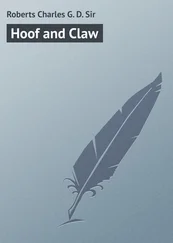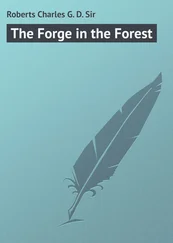Charles Roberts - Canada in Flanders. Volume III
Здесь есть возможность читать онлайн «Charles Roberts - Canada in Flanders. Volume III» — ознакомительный отрывок электронной книги совершенно бесплатно, а после прочтения отрывка купить полную версию. В некоторых случаях можно слушать аудио, скачать через торрент в формате fb2 и присутствует краткое содержание. Жанр: foreign_prose, foreign_language, на английском языке. Описание произведения, (предисловие) а так же отзывы посетителей доступны на портале библиотеки ЛибКат.
- Название:Canada in Flanders. Volume III
- Автор:
- Жанр:
- Год:неизвестен
- ISBN:нет данных
- Рейтинг книги:3 / 5. Голосов: 1
-
Избранное:Добавить в избранное
- Отзывы:
-
Ваша оценка:
- 60
- 1
- 2
- 3
- 4
- 5
Canada in Flanders. Volume III: краткое содержание, описание и аннотация
Предлагаем к чтению аннотацию, описание, краткое содержание или предисловие (зависит от того, что написал сам автор книги «Canada in Flanders. Volume III»). Если вы не нашли необходимую информацию о книге — напишите в комментариях, мы постараемся отыскать её.
Canada in Flanders. Volume III — читать онлайн ознакомительный отрывок
Ниже представлен текст книги, разбитый по страницам. Система сохранения места последней прочитанной страницы, позволяет с удобством читать онлайн бесплатно книгу «Canada in Flanders. Volume III», без необходимости каждый раз заново искать на чём Вы остановились. Поставьте закладку, и сможете в любой момент перейти на страницу, на которой закончили чтение.
Интервал:
Закладка:
Charles G. D. Roberts
Canada in Flanders, Volume III
In writing this preface to Vol. III of "Canada in Flanders" I am saying good-bye to my task as author of the first two volumes. The increasing pressure of other duties has made it impossible for me to pay those prolonged visits to the Front which alone keep a writer in vivid touch with the constantly developing realities of modern war, or to spare the time for the proper study of the historical material. Under these circumstances it seemed better to retain the Editorship of "Canada in Flanders," but to hand over the story of the Somme to the practised pen of Major Charles G. D. Roberts, who was present with the Canadian Corps during that Autumn Campaign.
But in doing this it is necessary to make good as far as possible the errors and slips which have come to light and been pointed out by the critics in the text of Vol. II.
As in the case of Vol. I., the majority of the mistakes is in the misspelling of names or the confusion of identity between officers with the same surname. I particularly regret the mistake by which the leadership of the advance on the lost craters at St. Eloi on the night of April 6th is ascribed to Lieutenant V. P. Murphy, of the 25th Battalion, instead, as it ought to have been, to Lieutenant G. D. Murphy, of the 28th Battalion (pp. 129, 132). Similarly, on p. 42, the name of Sergeant-Major Benton should have been inserted as the sergeant-major who went out with Private Donoghue to the rescue of the wounded; while the commanders of the raiding party of the 19th (Ontario) Battalion in August, 1916, should have been given as Captain C. E. Kilmer and Lieutenant H. B. Pepler (p. 68).
In the description of the battle of Sanctuary Wood there are several mistakes of the same character. Lieutenant Glassco, of the P.P.C.L.I., has his name misspelt on pp. 181 and 182, and Captain A. G. Wilken, the heroic chaplain of the 1st C.M.R.'s, is reported as being killed, whereas in reality he was taken prisoner. On p. 216 it should be made clear that the Colt guns under Lieutenant Ziegler, which played so important a part in the defence of the Hooge position on June 6th, belonged to the Machine Gun Company of the 7th Brigade. On p. 70 Lieutenant-Colonel C. H. Hill, D.S.O., is wrongly given as the Colonel of the Royal Canadian Regiment when the 3rd Division was formed in January, 1916, instead of Lieutenant-Colonel A. H. MacDonnell, D.S.O.; while the Commander of the 5th C.F.A. Brigade at the same period was Lieutenant-Colonel W. O. H. Dodds, and not Lieutenant-Colonel E. A. Carruthers.
Among more general errors it may be noted that Lieutenant Elliot is described on p. 104 as the "signal" instead of the "signalling" officer, and that the German unit opposed to us at St. Eloi was the 214th Regiment, and not the 214th Battalion – a German regiment consisting of three battalions and approximating more in numbers to our brigade.
On more general questions, such as the position and actions of units, only one controversy has been raised, and that is concerned with the early stages of the Battle of St. Eloi. This difficulty is to some extent inevitable, for with the exception of the Second Battle of Ypres there has been no action in this history of the Corps in which the true facts have been more difficult to obtain than in that confused fighting in the mud on the dreary dawn of April 6th of 1916, which lost us the craters and the advanced line. But all the available evidence has been sifted with the greatest care, and nothing has been brought to my attention which makes me inclined to modify or alter the provisional account given in the second volume. This does not mean in the least that in the future quite fresh material, both from Canadian and German sources, may not become available after the war and throw a totally new light on certain episodes. With this additional evidence before him the future historian may be able to rewrite parts of the story from the standpoint of this fuller knowledge. There is, however, one particular correction which can be made at once. I find that I have done something less than justice to the work of the 2nd Pioneer Battalion during the St. Eloi fighting. Their task here was one of incredible difficulty owing to the conditions of the weather, the state of the ground, to the severe and continuous shelling to which the whole area was subjected, and the uncertainty as to positions which wrapped the whole action in a fog. Yet the Pioneers' work was carried through with great courage and energy. In particular, the reconstruction of the old front British line from Shelley Farm to No. 2 Crater, which is ascribed on p. 144 to the infantry of the 5th Brigade, was in reality done by the Pioneers, who also took a large share in placing No. 2 Crater itself in an adequate state of defence.
There is an inevitable tendency to give to the work of the troops immediately behind the firing-line less attention and credit than they deserve.
The infantry sustain most of the hard knocks when it comes to climbing the parapet, and in return obtain the greater notice from the historian. But behind the thin and scattered lines, which wave after wave fall or go plodding on, the gunners, the sappers, and the pioneers are preparing or consolidating the victory. The battle is no longer between the opposing lines of the infantry, for to win a position you must hold it, and to hold it you must have brought up swiftly and safely from the rear bombs, ammunition, wire rations, and a means of entry for the supporting and relieving troops, the area of the battle is no longer the front line, it is behind this that the enemy barrage descends, and over a wide field of fire the German shells are searching for all those who would bring up succour and relief. It is under these conditions that the pioneers must do their work. In the night, only illumined by the fitful flare of the star-shells shedding a pale and sudden luminance behind the front line and leaving the darkness more intense than ever, the old and battered communication trench of the Germans has to be made good to the front line. The trench from previous occupation is well known to the enemy, and as the pioneers shovel out the mud and the dirt to the left and right a new illumination is provided by the sudden glare and suffocating fumes of the heavies bursting right or left or in the trench itself. But night at least gives the appearance, if not the reality, of safety. As the infantry go forward the work must often be done in the broad daylight, the trench driven through to the new line, or a new resistance built to face the counter-attack. The men of the Pioneers who have to undertake this task must do it in cold blood. They are robbed of that excitement of personal conflict which can carry the fighting man through the most desperate dangers in a frame of mind which hardly remembers the horrors through which he passes, and crowns the story of his achievements with a halo and a fascination not granted to work less interesting but no less vital.
The achievements of the 2nd Pioneer Battalion at the Somme will take rank with any of those of the infantry. At Courcelette their duty was to follow on the heels of the 2nd Division, to drive communication trenches through without delay to the new lines, and to relieve the infantry immediately of the final consolidation of the captured trenches. In the darkness before the assault Lieutenants McGhee and Davis crawled out into No Man's Land and pegged out the line of trenches to be dug next day. The moment the 2nd Division had taken the German front line the Pioneers started out to drive these trenches through in broad daylight and under a sweeping rain of heavies. Lieutenant McGhee exhibited great courage and devotion to duty; he was three times buried by the explosion of heavy shells close to him, and three times dug himself out with his entrenching tool and continued to mark out the line of the advancing trench for his men. What the effect of such shelling may be is illustrated by the extraordinary and gruesome story of the death of Lieutenant Tracy of the same regiment some days before. While prospecting in advance of the line a German shell burst right on him. A rescue party of Pioneers went out immediately to find him on the spot of the shell-burst. Not a sign of the unfortunate officer could be found, and the search was abandoned. On the day of Courcelette his body was found by the advancing infantry fifty yards from where he had been struck down. For the Pioneers this kind of work must be done, day in and day out, or night in and night out, for weeks at a time. When the infantry is too exhausted by its efforts to make good the line, the Pioneers must be called up to supplement their efforts. If a strong point has to be built, it is to the Pioneers that the engineer officer will look to carry out his instructions, and in the achievement of all these tasks the Pioneer Battalions of the Canadians have covered themselves with glory.
Читать дальшеИнтервал:
Закладка:
Похожие книги на «Canada in Flanders. Volume III»
Представляем Вашему вниманию похожие книги на «Canada in Flanders. Volume III» списком для выбора. Мы отобрали схожую по названию и смыслу литературу в надежде предоставить читателям больше вариантов отыскать новые, интересные, ещё непрочитанные произведения.
Обсуждение, отзывы о книге «Canada in Flanders. Volume III» и просто собственные мнения читателей. Оставьте ваши комментарии, напишите, что Вы думаете о произведении, его смысле или главных героях. Укажите что конкретно понравилось, а что нет, и почему Вы так считаете.












